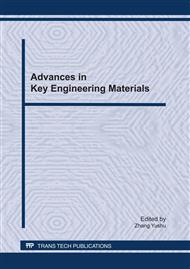p.93
p.97
p.103
p.108
p.113
p.118
p.122
p.128
p.133
The Influence of Welding Parameters on Effected the Complete for Resistance Spot Welding on Mild Steel
Abstract:
This research was study the effect of resistance spot welding process on physical properties. The specimen was mild steel sheet metal. The experiments with full factorial design. The factors used in this study are welding current, welding time and electrode force. The welded specimens were tested by tensile shear testing according to JIS Z 3136: 1999 and macro structure testing according to JIS Z 3139: 1978. The result showed that both of welding current, welding time and electrode force had interaction on tensile shear and nugget size at 95% confidential (P value < 0.05). Factors affecting the tensile shear and nugget size are the most welding current 10,000 amp., welding time 10 cycle and electrode force 1 kN. were tensile shear 7.13 kN. and nugget size maximum 6.75 mm. This research can bring information to the foundation in choosing the appropriate parameters to resistance spot welding process.
Info:
Periodical:
Pages:
113-117
Citation:
Online since:
February 2011
Authors:
Price:
Сopyright:
© 2011 Trans Tech Publications Ltd. All Rights Reserved
Share:
Citation:


